Indications for Tube Thoracostomy

Indications for Tube Thoracostomy

– Symptomatic or clinical instability
– Large asymptomatic pneumothorax
Contraindications for Tube Thoracostomy
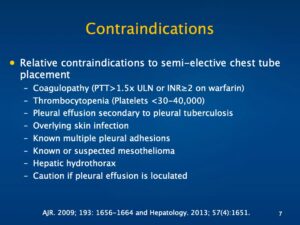
– Coagulopathy (PTT> 1.5x ULN or INR>2 on warfarin)
– Thrombocytopenia (Platelets <30-40,000)
– Pleural effusion secondary to pleural tuberculosis
– Overlying skin infection
– Known multiple pleural adhesions
– Known or suspected mesothelioma
– Hepatic hydrothorax
– Caution if pleural effusion is loculated
Complications of Tube Thoracostomy
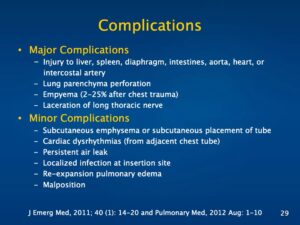
– Injury to liver, spleen, diaphragm, intestines, aorta, heart, or
intercostal artery
– Lung parenchyma perforation
– Empyema (2-25% after chest trauma)
– Laceration of long thoracic nerve
– Subcutaneous emphysema or subcutaneous placement of tube
– Cardiac dysrhythmias (from adjacent chest tube)
• Persistent air leak
– Localized infection at insertion site
• Re-expansion pulmonary edema
– Malposition
Equipment for Tube Thoracostomy
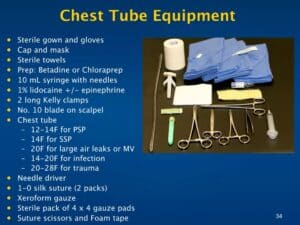
PSP = primary spontaneous pneumothorax
SSP = secondary spontaneous pneumothorax
MV = mechanical ventilation
– 12-14F for PSP
– 14F for SSP
– 20F for large air leaks or MV
– 14-20F for infection
-20-28F for trauma
Wire-directed Pigtail catheter placement Equipment

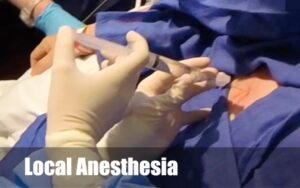
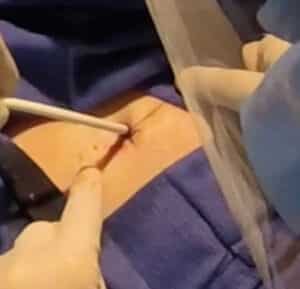
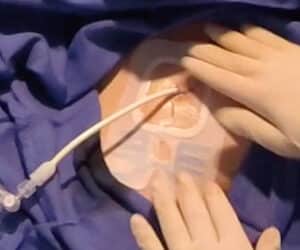
Coding for Tube Thoracostomy
Procedural Sedation for Tube Thoracostomy

Options for Moderate-Deep Procedural Sedation for Non-emergent Chest Tube Placement
– 1% lidocaine
= 10 mg/mL
– 70 kg man
– 30 mL lidocaine or 49
mL lidocaine with
epinephrine